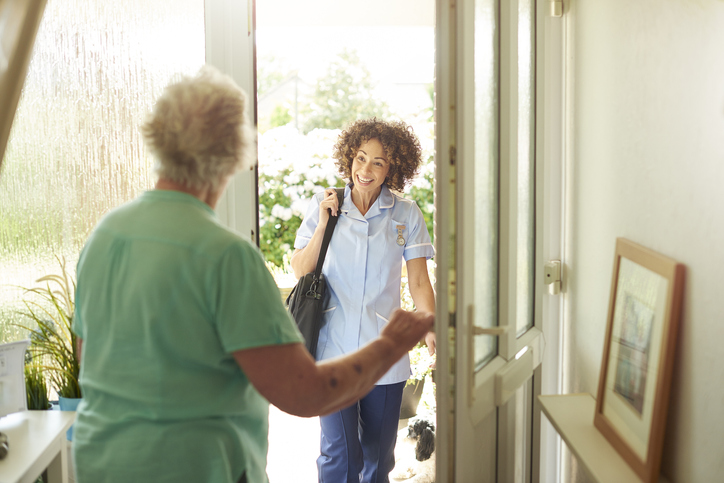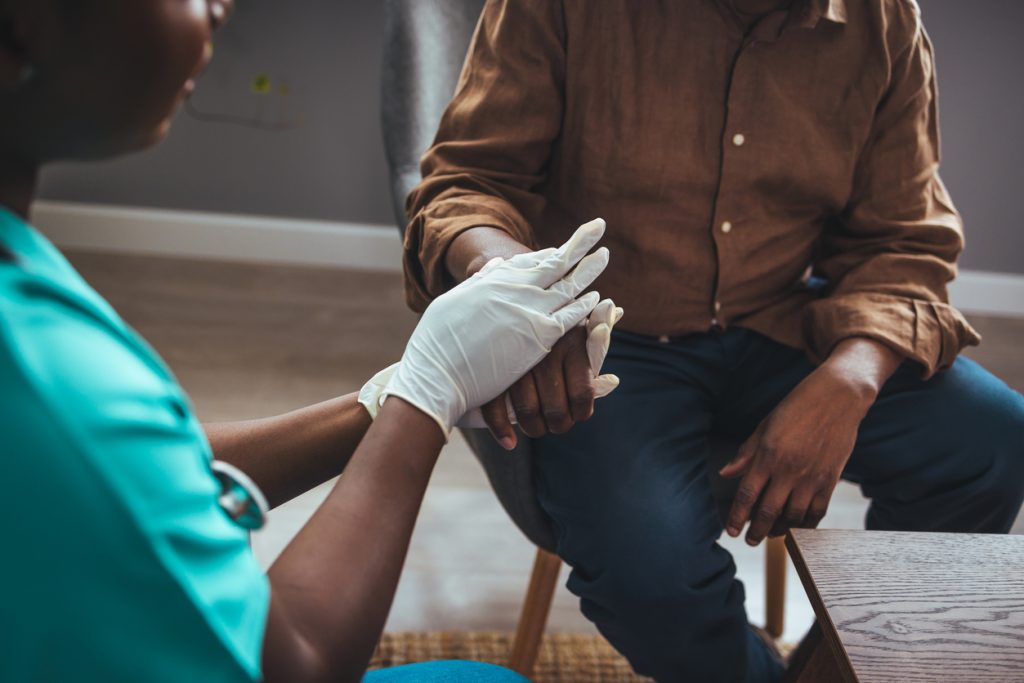Being a carer is a hands-on job. Within your day-to-day tasks you may be helping to lift the person you care for in and out of bed, perhaps assist them with tasks such as personal hygiene and getting dressed, assisting them getting into the car, and more. As such, being a carer naturally include more risk for accident or injury to occur than many more sedentary jobs. In this guide, we’ll identify a few key ways to preventing injury and accidents in your role as a carer.
Injuries are a constant risk for many carers, especially if proper lifting techniques and methods to safeguard your own health and well-being are not followed. Before learning how to avoid injuries, it’s important to recognise where these risks may present themselves in your day as a carer.
Common injuries and accidents for carers
Lifting injuries
As a carer, it may fall under your responsibility to assist the person you provide care for with a number of daily actions that require you to lift or support them physically. According to the NHS, the most common injuries for carers are back injuries. Lifting may be required in a number of circumstances, for example:
- Assistance getting in and out of the bed
- Help to use the bathroom
- Support when getting in and out of the bath/shower
- Help when using a wheelchair or mobility scooter
- Assistance getting in and out of the car
Repetitive strain injuries
Repetitive strain injuries can occur due to doing the same tasks constantly without sufficient breaks or without wearing suitable PPE. For a carer, this can be caused by anything from lifting incorrectly to simply doing tasks such as cleaning, cooking etc frequently causing a strain on the body.
Puncture wounds
Another injury risk that carers may encounter is puncture wounds from handling sharp objects such as needles. If you are administering medications as part of your responsibilities on a regular basis, this is a potential accident to be aware of.
Physical assaults
Another risk that some carers may encounter are physical assaults from residents. As one example, carers working with someone suffering from Alzheimer’s disease may need to be aware of the potential for them to be aggressive or even violent if confused.
Preventing injury and accidents as a carer
Knowing the risks that you may encounter within your role is one thing; knowing how to prevent them and keep yourself safe is another.
Lifting safely
To reduce your risk of a back injury, learning how to properly lift is essential. A few key things to bear in mind include:
- Keep both feet stable, and stand close to the person you are lifting.
- Bend your knees (not your back) and squat in preparation to lift, keeping your abdominals in and your back straight.
- Face the person you are lifting and point our feet towards them to prevent your back from bending too much as you lift.
- Always lift using a smooth motion, pushing with your leg muscles first.
Ergonomic assistance
As well as learning how to lift correctly as a carer, there are also tools and equipment you can use to assist you and the person you care for on a daily basis.
A few tools you may find useful to reduce the strain on you can include:
- Installing shower benches and chairs for bath use
- Grab bars and toilet seat risers for use in the bathroom
- Using hoists and lifts to get in and out of bed if the person you care for can
As a caregiver, it can be easy to put the needs of the person you care for over yourself. However, maintaining your own safety and comfort is just as important to ensure you stay free from injuries and able to carry out your daily tasks without pain.
Focus on learning how to lift properly to protect your back in particular, and consider what tools you could use around the house to help you with your responsibilities.
Medical training
If you are administering medication to someone you provide carer for via a needle, you will of course need the necessary medical training and qualifications to do so. This, and following safety procedures at all times, is essential for avoiding puncture wound incidents when working.
Taking breaks
A simple but highly effective safeguard against many accidents is ensuring you are rested and mindful of your own health and well-being. Repetitive strain injuries can occur by constantly doing the same actions without sufficient breaks, so taking care to assign breaks throughout your day is a must.
If you feel unable to take sufficient breaks in your role as a carer, you might be interested in reading: Respite for Carers: How to Get a Break.
Insurance for carers
Of course, although you can try to prevent accidents and injury in your workplace as a carer, the risk is always there. That’s why having sufficient carers insurance is necessary in order to cover yourself should something happen that prevents you from working.
We provide cover for self-employed carers, individuals employing their own carers, and organisations that arrange care, with cover for public liability, personal accident, loss or damage to property, and more.
At Surewise.com, protecting our customers is our core mission. That’s why we provide Carers Insurance to cover you against the risks you may face in your workplace.
Available in both monthly and annual plans, get your Carers Insurance quote today so you can start living life confidently.







